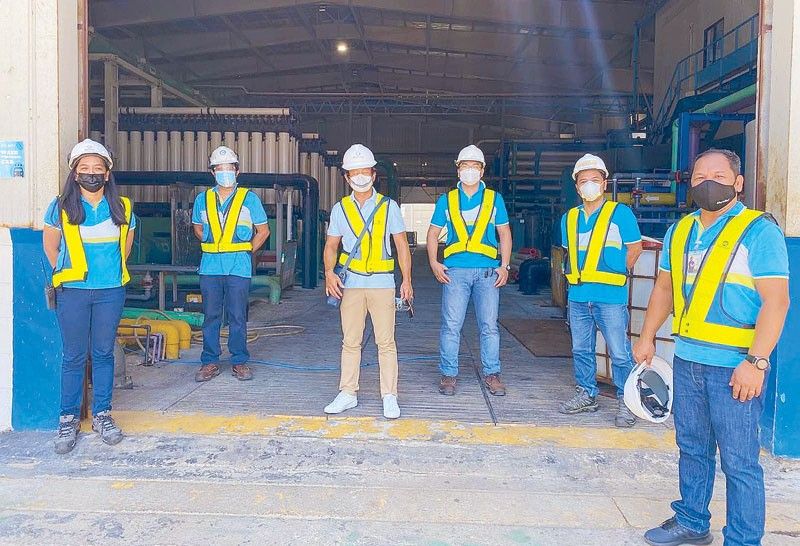MWSS assures water security in Metro Manila

I’ve written about air security and the current, impending need to guard our skies, both natural and cyber, and how this is being carried out by the Philippine Air Force (PAF) in partnership with PLDT-Smart.
With the dry season officially declared by the Philippine Atmospheric, Geophysical and Astronomical Services Administration (PAGASA), our thoughts turn towards security of another kind, and that is water.
Water security, as defined by the United Nations Water (UN Water), is “the capacity of a population to safeguard sustainable access to adequate quantities of acceptable quality water for sustaining livelihoods, human well-being, and socio-economic development, for ensuring protection against water-borne pollution and water-related disasters, and for preserving ecosystems in a climate of peace and political stability.”

Simply put, water security is nothing more than having enough clean water for our needs.
The Metropolitan Waterworks and Sewerage System (MWSS), the government agency in charge of water privatization in Metro Manila, has given the assurance that there will be no water shortage in Metro Manila and neighboring local government units in the provinces of Rizal, Bulacan, Cavite, and Laguna until 2035.
MWSS administrator, retired police Lt. Gen. Reynaldo Velasco, assured the House Committee on Metro Manila Development that if they follow the program that they had started, the metropolis will have enough water supply for the next 14 years.
In the same House hearing, Randy Estrellado, chief operating officer of Maynilad Water Services Inc., the water and wastewater services provider of cities and municipalities that form the West Zone of the Greater Manila Area, confirmed enough water supply during the dry seasons of 2021 and 2022.
Maynilad, who is an agent and contractor of MWSS, continues to seek many and more ways to improve the quality and supply of water in the metropolis.
Maynilad is the first water company to source drinking water from Laguna de Bay, the largest lake in the Philippines and the third largest freshwater lake in Southeast Asia.
It began tapping Laguna de Bay as an alternate source of water in 2010 to serve customers in the South, thus reducing reliance on Angat Dam and serve as a redundant supply source.

About 88 per cent of Maynilad’s raw water supply comes from the Angat Dam in Norzagaray, Bulacan. The rest comes from Laguna de Bay and from deep wells.
During the dry season, the level of water in Laguna de Bay drops, resulting in the backflow of water from Manila Bay into the lake and causing a rise in salinity in the lake’s water.
To address this, Maynilad constructed the Putatan Water Treatment Plants (PWTP) 1 and 2 in Brgy. Putatan, Muntinlupa. These have a combined treatment capacity of 300 million liters per day.
Both plants are the largest integrated, membrane-based water treatment facilities in the Philippines.
Plans to construct a third treatment facility sourcing raw water from Laguna de Bay are currently underway. This new facility will be built in Brgy. Poblacion, Muntinlupa, and will have a total treatment capacity of 150 million liters per day.
The third plant will augment Maynilad’s supply source in the South where major industries and economic zones are currently located and where housing developments have mushroomed.
To serve the northern portion of its concession area, Maynilad has started construction of its P10.5-billion Caloocan-Malabon-Navotas (CAMANA) water reclamation facility project. It is expected to be commissioned in 2024, and will treat 205 million liters per day, the biggest of its kind in the country.
Around 1.2 million households in South Caloocan, Malabon, and Navotas will benefit from this huge undertaking.
Three new sewage treatment plants are likewise scheduled for completion this year to provide sewerage services to 700,000 residents in Muntinlupa and Valenzuela.

These plants are capable of treating 126,000 cubic meters of wastewater daily and will augment 22 wastewater facilities currently operating in the West Zone concession area.
According to Maynilad president and CEO Ramoncito S. Fernandez, while pandemic-related constraints continue to hinder their manpower deployment, they will strive to get these new facilities running and serving communities within the year.
All these investments are part of Maynilad’s response to the challenge of meeting the water requirements of an ever-growing population and thriving economy in Metro Manila and nearby provinces.
With the water concession agreement currently under review, we hope that this public-private partnership between government, through the MWSS, and Maynilad be further strengthened and developed for the good of the Greater Manila Area and its residents.
- Latest





























